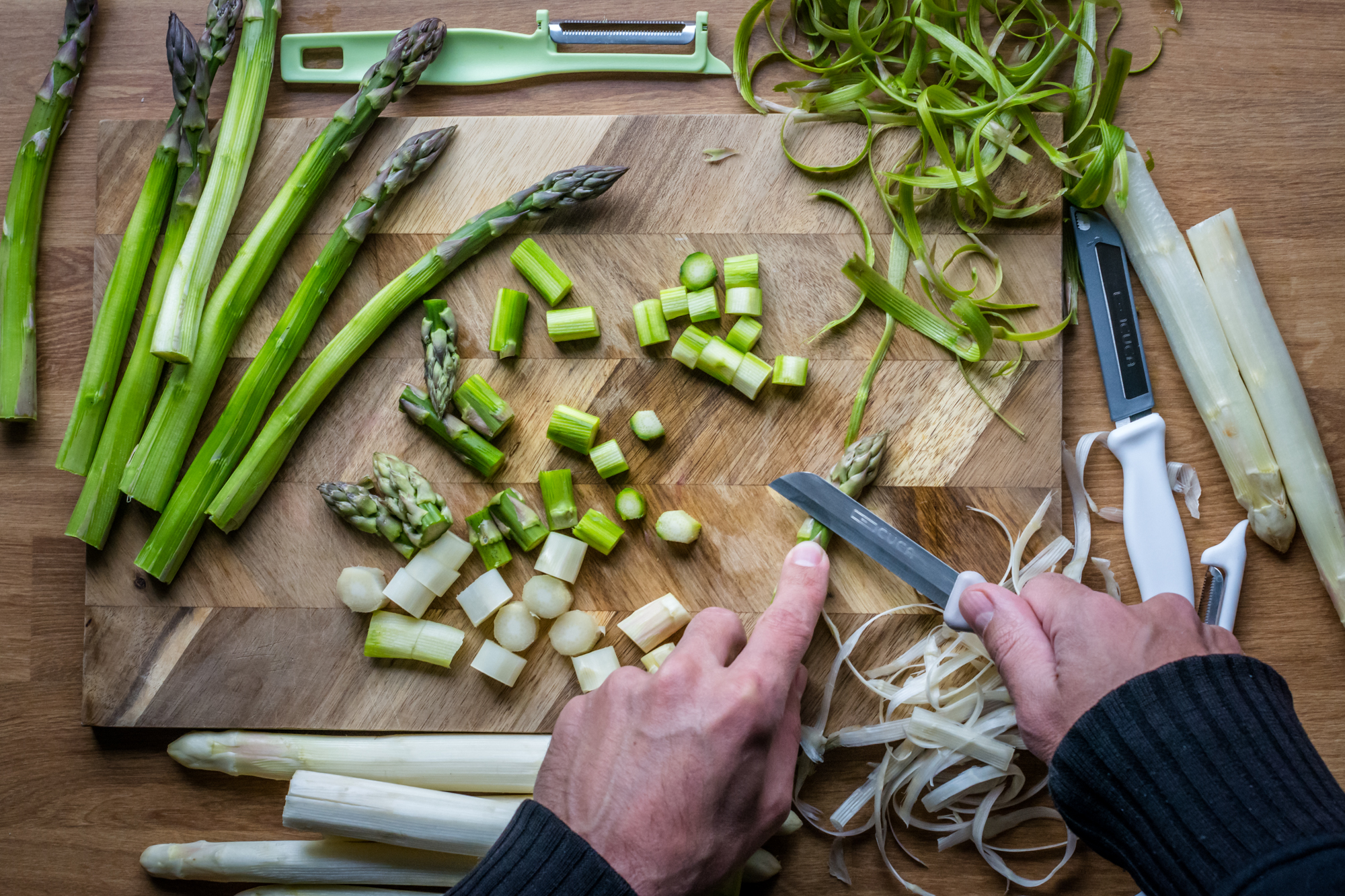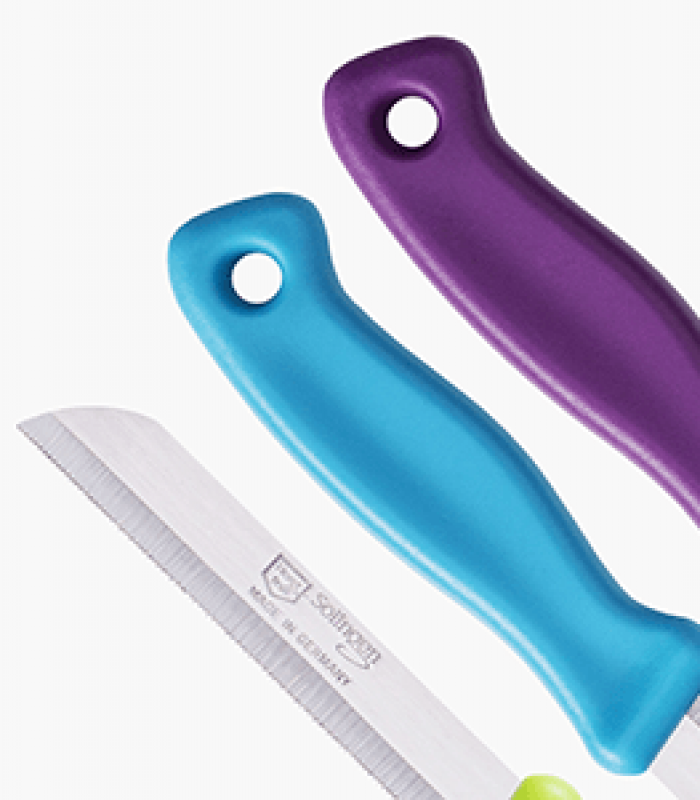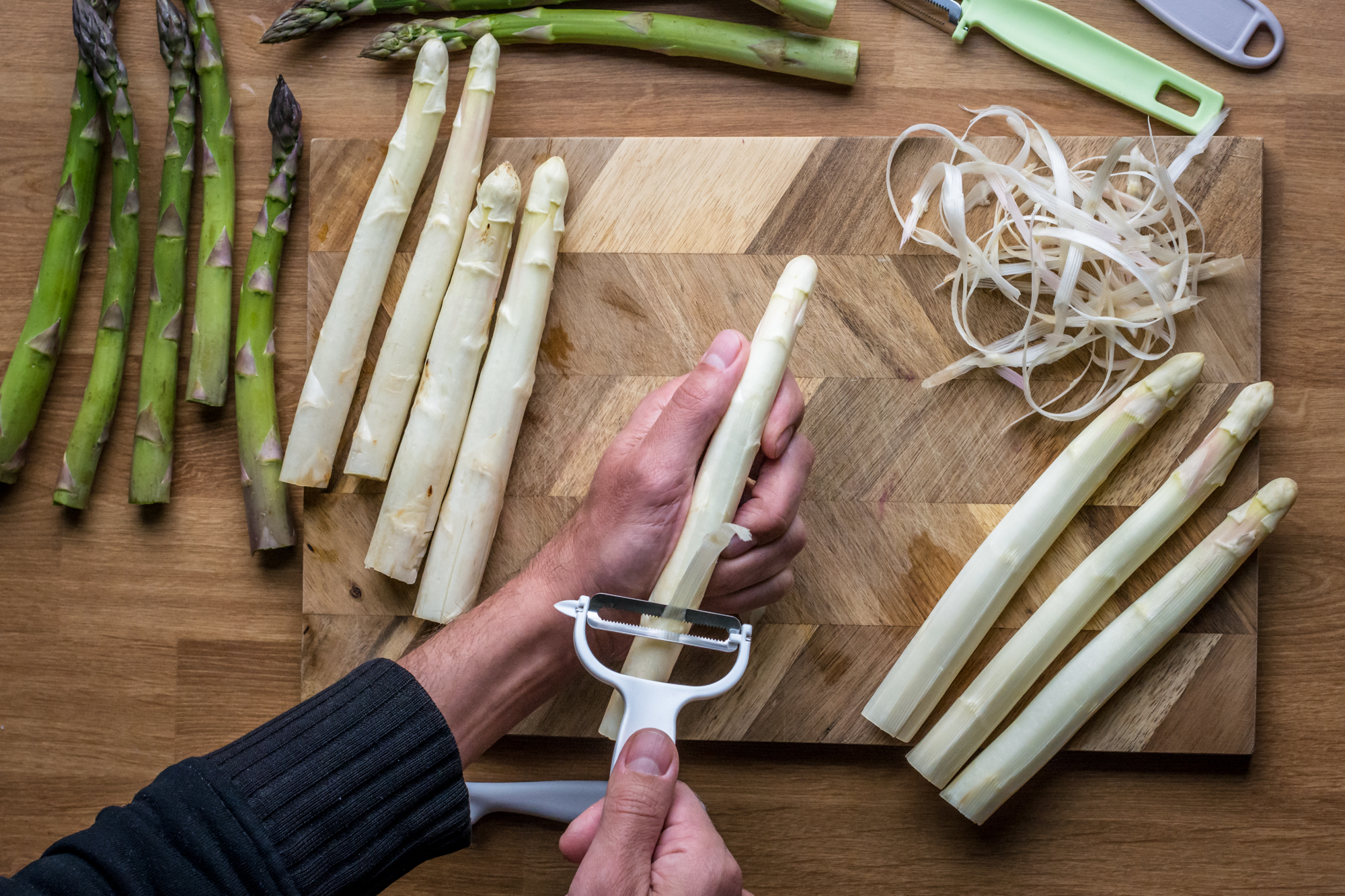Good mood food: ASPARAGUS

20
Jun


Asparagus has been cultivated for thousands of years, dating back to ancient Egypt and Rome. Prized for its unique flavour and medicinal properties, asparagus was a favourite vegetable of kings and aristocracy. Today, they remain a valued ingredient in kitchens around the world. Growing asparagus requires patience and care. It grows best in well-drained, sandy soil with plenty of sun. Asparagus is usually planted in spring, using roots or seeds (less often). Patience is the key: asparagus takes about three years (sic!) to produce a full crop. Once established, however, an asparagus patch can produce tender veggies for 15 years or more. Interestingly, white and green asparagus are the same plant - the difference between them is the way their spears grow. White asparagus is grown underground, whereas green asparagus is grown above the ground. White asparagus is fully covered with soil, while green asparagus gets access to sunlight, which allows it to produce chlorophyll and go green. Maybe you could also try planting a patch of asparagus in your garden or in a pot on the balcony?

You can do wonders with them in the kitchen! They can be steamed, grilled, baked or added to salads and fried dishes. Their delicate, slightly sweet taste (white asparagus) or slightly more distinctive (green asparagus) goes perfectly with a variety of dishes, which makes them an ideal addition to any meal. That's why it's worth inviting them to your kitchen, especially at the beginning of the summer season. Are you discouraged by the toilsome, laborious peeling? There is a way! Just get the right peeler and preparing asparagus will be quick and hassle-free. The Good Mood Academy by CUCA especially recommends vegetable peelers with serrated blades, which not only easily remove the slippery skin, but also create fine grooves on the vegetables, thanks to which your favorite additions, such as melted butter or Hollandaise sauce, stick to the surface. What's more, by peeling the ends of green asparagus (instead of breaking them off), you can easily increase the portion of these delicacies. See for yourself!
In terms of nutritional value, asparagus turns out to be a real treasure trove. They are low in calories but rich in vitamins and minerals. A portion of asparagus provides a significant amount of vitamins A, C, E and K, as well as folic acid, iron and fiber. They are also a good source of antioxidants, which help fight free radicals and inflammation in the body. Additionally, asparagus contains an amino acid (asparagine), which supports kidney function and acts as a natural diuretic, helping to remove excess salt and fluid from the body. Moreover, asparagus is considered one of the most effective natural aphrodisiacs. Can you ask for more?

Do you prepare asparagus often? What is your favorite way? Share our post and tell us about your favourite asparagus recipes in the comments! In the meantime, we wish you successful kitchen experiments and that's it for today... we have to rush to the grocery store in search of the perfect bunches! 😉
It only takes a second for you to be the first to know about our news and promotions...
It will be WONDERFUL to have you as part of our CUCA community. Subscribe today and stay updated!
Jako pierwszy dowiedz się o naszych nowościach produktowych oraz inspirujących aktualnościach.
Dane zostaną wykorzystane zgodnie z Polityką Prywatności